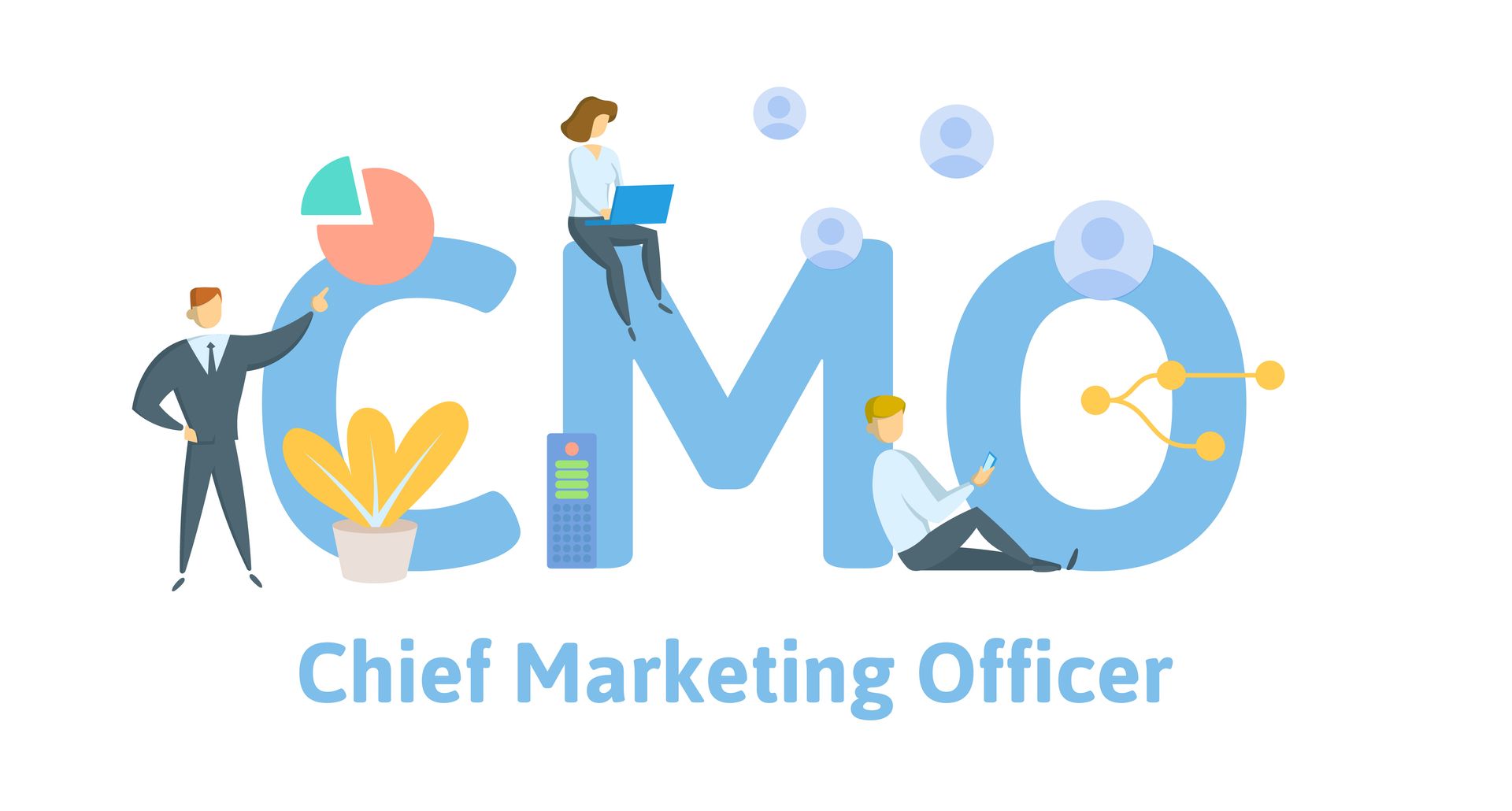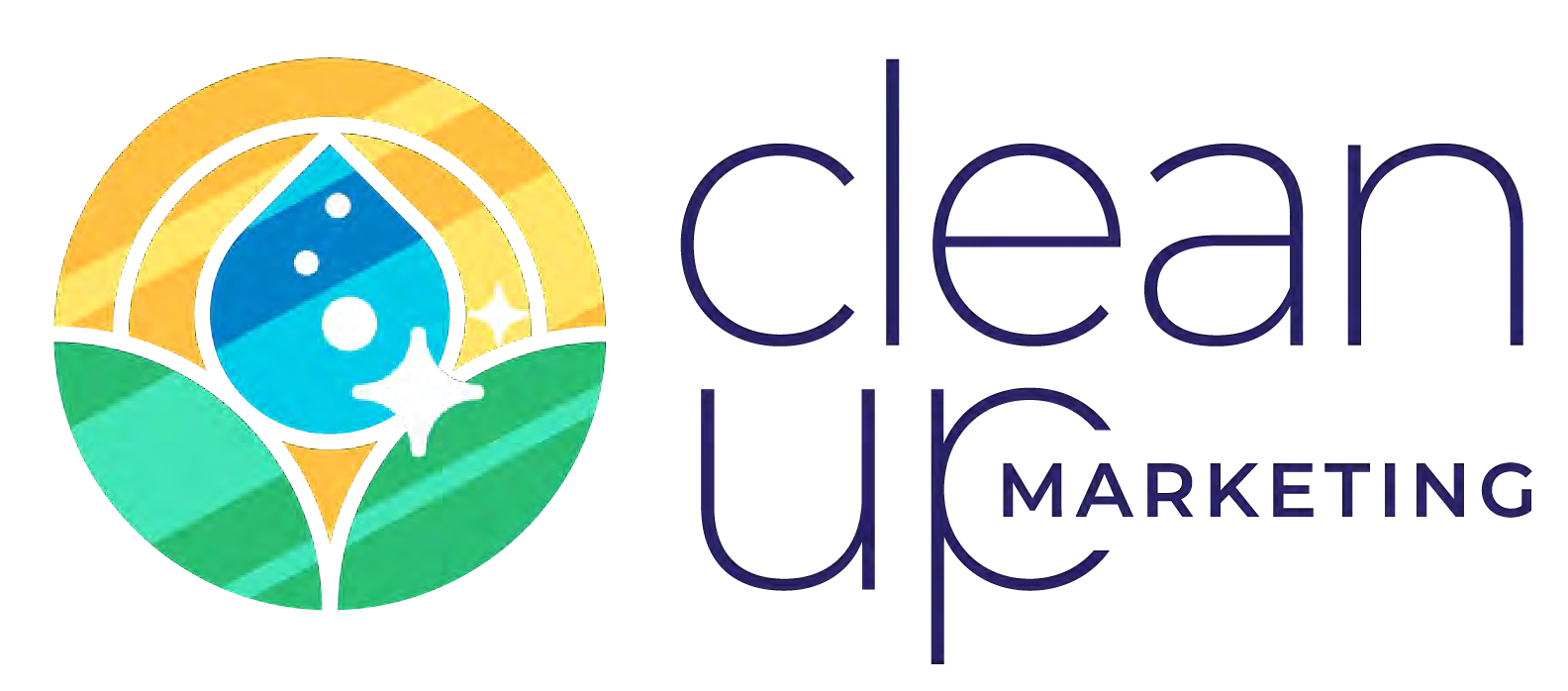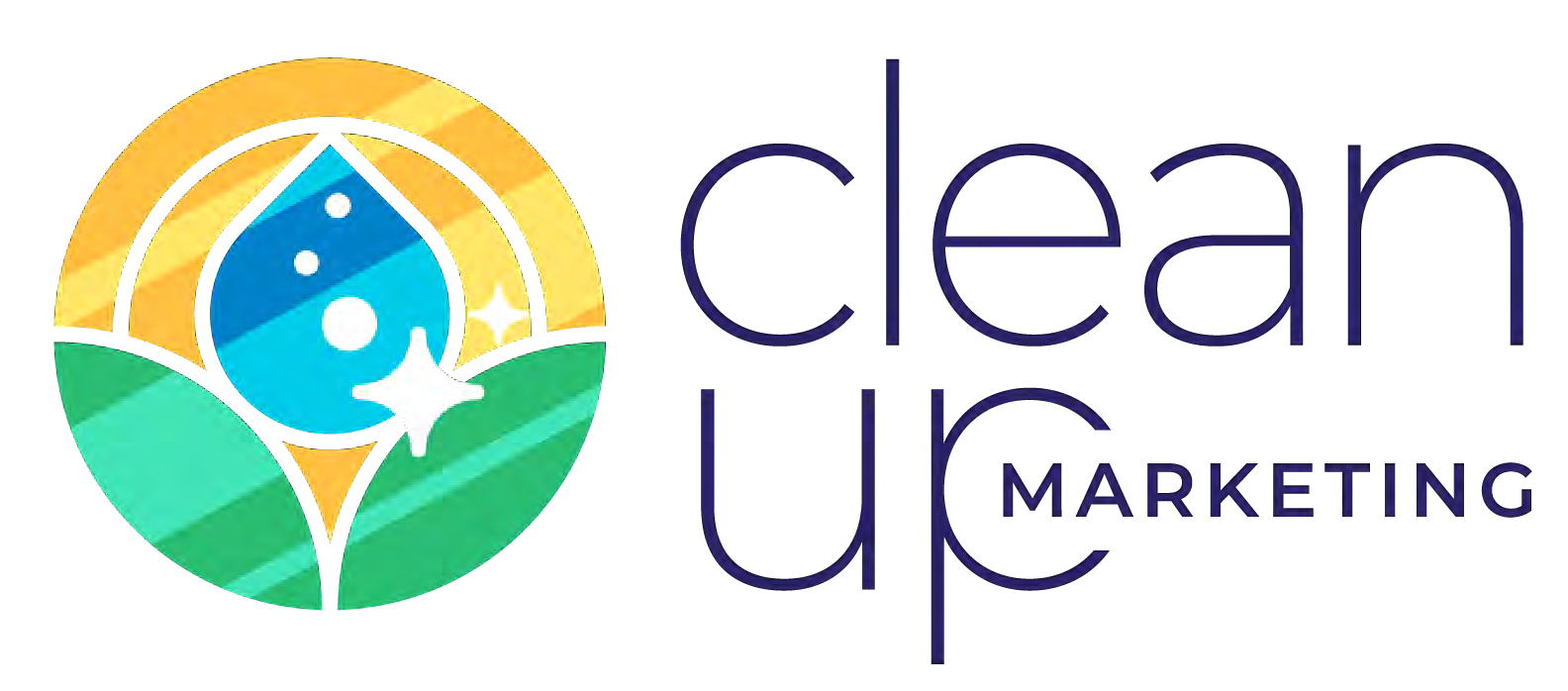Why Two Minutes Is Too Long for Your Cleantech Video
Michael Grossman • June 24, 2025
If your cleantech company is investing in video marketing to attract investors, partners, or customers, here’s a reality check: two minutes is already too long.
In an industry driven by innovation, your biggest competitor isn’t just another startup—it’s the shrinking attention span of your audience. Whether you're speaking to decision-makers on LinkedIn, pitching venture capitalists, or educating end users, the format and length of your content matters more than ever. And the data is clear: short videos get watched, shared, and acted on. Long videos? They get skipped.
This blog explains why shorter is smarter—and how to reframe your cleantech video strategy to maximize visibility, engagement, and impact.
1. Attention Spans Have Collapsed
Let’s start with the most sobering stat: the average attention span of an American adult is now just 8.25 seconds—shorter than a goldfish’s.
Your target audience—whether they’re energy executives, grant reviewers, or sustainability officers—are overwhelmed by information. If your video doesn’t hook them immediately, they’ll scroll past, delete the email, or click into another tab. And the longer the video, the higher the dropout rate.
This doesn’t mean you can’t tell complex stories. It means you must lead with what matters. Your first few seconds need to make people care, and your entire video needs to earn every additional second of attention.
2. Engagement Plummets After 60 Seconds
According to Vidyard, which analyzed thousands of B2B marketing videos, the most successful marketing videos are under 60 seconds. For outreach and first-touch content—where you’re introducing your company or product—shorter videos consistently outperform longer ones in both completion rate and engagement.
Even for mid-funnel content like explainer videos or case studies, the recommendation is to stay under two minutes. Beyond that, you’re talking to a shrinking audience.
This is particularly relevant in cleantech, where it’s common to want to “explain everything.” But in reality, your audience doesn’t need to understand your full innovation stack to believe in your impact. They just need to see what problem you solve and why it matters to them.
3. Data Shows Viewers Drop Off Fast
Wistia’s video analytics make the case crystal clear: videos between 30 seconds and two minutes retain attention far better than videos over five minutes, which average just 38% engagement.
That means for every ten people who click “play” on your five-minute demo, only three or four will watch it to the end. And those three? They were probably already sold on your idea.
The lesson: use short videos to pull people in. Then, once they’re engaged, send them longer-form content—like webinars, case studies, or product tours—when they’re more invested.
4. The Decline in Video Attention Spans Is Real and Measurable
According to Infosys BPM, the average attention span for video content has dropped from 2.5 minutes in 2004 to just 47 seconds today.
This isn’t just a marketing trend—it’s a behavioral shift across industries, platforms, and audiences. Cleantech leaders often assume their audience is different: “Our buyers are technical.” “We sell to governments.” “Our customers are researchers.”
That may be true, but those same professionals still scroll Instagram, click through YouTube Shorts, and scan headlines just like everyone else. If your message isn’t clear, visual, and fast, it won’t land—even with the people you think are patient.
How to Make Shorter Videos That Work
So what should your cleantech company do with this information? Rethink your entire video approach:
A. Lead with the Problem, Not the Product
The most common mistake is starting your video with who you are and how your technology works. But your audience doesn’t care—yet. Instead, start with the pain:
• “Grid instability is costing $16B in lost energy.”
• “Regulators are demanding Scope 3 emissions tracking—and 80% of companies aren’t ready.”
Once you’ve made the viewer care, then you can show how you help.
B. Script for 45 Seconds, Not Two Minutes
If you’re writing your video scripts to fill two minutes, you’re already over-explaining. Try scripting 100–150 words max—that’s about 45–60 seconds of voiceover. Strip out jargon. Focus on outcomes.
C. Use Vertical Formats for Social
Most cleantech companies still produce horizontal videos—even though 80%+ of content is now consumed on mobile. Use vertical video (9:16 ratio) for LinkedIn, YouTube Shorts, Instagram Reels, and TikTok to reach audiences where they scroll.
D. Save Longform for Later Stages
There’s a place for longer content—but it’s not in your first pitch. Use short videos to earn the click, then offer follow-up material like:
• 5-minute explainer videos (hosted on YouTube or your site)
• 10-minute investor briefs (shared privately or at events)
• Recorded webinars for those in the evaluation stage
Final Thought: Precision Beats Volume
In cleantech, your message matters. But how you deliver it is what determines whether it gets heard. With shrinking attention spans, a two-minute video isn’t an asset—it’s a liability.
By keeping your message sharp, visual, and under 60 seconds, you’re not “dumbing down” your work—you’re respecting your audience’s time and giving your company a real shot at getting seen.
Because if you can’t tell someone in 30 seconds why your solution matters, they won’t give you 30 more.

Cleantech founders don’t start companies just to follow trends—they start them to solve problems. You’re on a mission to decarbonize, electrify, conserve, or revolutionize. But when capital gets scarce, even the most principled team can’t avoid the hard question: Should you pivot your mission to follow the money—or hold the line until the money finds you? We’re living through a moment of retrenchment. Private cleantech investment dropped 40% year-over-year as of Q1 2024 . Public support is increasingly politicized and inconsistent . And venture investors are demanding faster paths to profitability across all sectors . So how should founders respond? Should you chase whatever gets funded—AI, hydrogen, grid software—even if that means moving away from your original value proposition? Let’s break this down with three practical steps. 1. Get Real About Market Fit In a capital-constrained environment, clarity is your best weapon. Investors aren’t backing broad climate impact—they’re backing specific, fundable use cases . That means you don’t need to throw out your mission—but you do need to tighten your positioning. Start by asking: • Are you solving an urgent problem? • Is that problem clearly felt by a well-defined customer segment? • Can you show near-term traction or revenue within that segment? If the answer to any of these is “not yet,” consider shifting your messaging and GTM strategy before you consider shifting the mission. You may not need to change what you build—just how you package and deliver it. Example: A company building grid-resilience technology for utilities may struggle to close early contracts. But that same product reframed for large corporate campuses, municipalities, or commercial developers might find faster traction with buyers who don’t have multi-year procurement cycles. 2. Translate Impact Into ROI Mission-driven founders often default to language about “carbon,” “sustainability,” and “climate impact.” But funders are under pressure to produce returns—not just results (). Your pitch needs to connect your impact to economic value—because your audience still operates on a spreadsheet. That means making your ROI case early and clearly: • How does your tech save money? • What regulatory pressure does it solve? • How does it reduce risk, time, labor, or compliance overhead? If you can’t connect your mission to measurable business outcomes, no pivot will help. But when you can tie your climate value prop to real-world economics, you’ll unlock strategic investors—even in a tight funding climate. Pro tip: Replace “we reduce emissions” with “we reduce energy costs by 22% and avoid $5M in annual downtime.” Same mission, better funding odds. 3. Stop Pitching—Start Partnering In today’s climate market, relationships matter more than ever . Cold pitch decks are yielding diminishing returns. But warm introductions, pilot partnerships, and local engagement are proving critical to early-stage survival. Here’s how to lean in: • Politicians: Position your project as a win they can run on—clean jobs, energy independence, or local investment. • Anchor Customers: Land a lighthouse deployment with a recognizable buyer—even at cost—to signal traction. • Economic Development Offices: They have local incentives, tax credits, and federal ties that can support you when venture capital won’t. This kind of ecosystem building isn’t chasing the money—it’s laying the foundation so money has a reason to chase you. 4. Know When to Pivot—and When Not To Sometimes, changing your messaging, customer segment, or value prop isn’t enough. You might realize that your current business model just isn’t fundable right now—even if the mission is sound. In that case, you’re not selling out by adapting. You’re ensuring your tech gets to market where it can actually make a difference. But know this: chasing trends without conviction will show. If you’re not an AI company, don’t slap “AI” on your deck. If your tech doesn’t solve a hydrogen production problem, don’t pitch into that space. Funders can tell when you’re bluffing. Instead, find the adjacent markets where your tech already has a right to win—and bring your mission with you. 5. Stair Step Cleantech companies have big dreams and long timelines, but it may not be possible to achieve your end goal before your funding runs out. In that case, prove your technology in smaller markets that won’t have global impact in the short term, but generate revenue to keep the doors open. For example, companies creating anodes, cathodes, cells, and materials for EV batteries are extremely capital intensive. Rather than jump into the deep end of the battery pool, it might make more sense to start by selling those advances to companies that make wearables as a way to generate revenue while keeping the larger goal in mind. Final Thoughts It’s tempting to shift focus when funding gets tight. But the best cleantech companies don’t abandon their mission—they reframe it, refocus it, and repackage it to meet the moment. Don’t follow the funding headlines—follow the customers, use cases, and relationships that create momentum . The money will follow. Because at the end of the day, your mission doesn’t have to chase the money—as long as it’s grounded in outcomes that markets (and funders) value.

Why No One Opens Your Newsletter So, your open rates are tanking, and your click-throughs are even worse. You’ve tested sending at different times of day and days of the week, A/B tested call to action buttons, and still—crickets. The issue might not be your content or timing. Your entire approach to email may be outdated. The word “newsletter” has become digital clutter. It evokes something impersonal, infrequent, and ultimately irrelevant. In a world where decision-makers are flooded with content, your email has to feel like a one-to-one conversation, not a corporate announcement. Let’s unpack the three biggest reasons your email isn’t getting read—and how to fix it. 1. Stop Calling It a Newsletter The word “newsletter” sets you up for failure. It sounds long, slow, and not immediately valuable. Instead, treat every email like a headline. The most important real estate is your subject line—not the CTA, not the header image. Subject lines determine whether your email even gets opened. Subject lines are your introduction—it needs to catch the recipient's attention immediately . If you wouldn’t click on it, your audience won’t either. Avoid corporate speak, vague intros like “Company Update,” and overused clickbait. Instead, focus on clarity + value + urgency. Example: • Bad: June Newsletter from GreenTech Solutions • Good: The $5,000 Mistake You’re Making with Energy Credits Also, personalize when appropriate—open rates increase when readers feel like the message was written for them, not blasted to everyone. 2. It’s Too Long. Cut It Down. Overly long emails are less likely to be read in their entirety . And the data backs it up. The ideal length of an email? Around 200 words or fewer. Emails longer than that experience significantly lower click-through and engagement rates. Best newsletter length = 200 words or ~20 lines for optimal click-through rates . That means it should take no more than 30 seconds to read aloud. If it takes longer, you’ve already lost them. People scan. They don’t read. Especially in industries like cleantech where your audience might be investors, engineers, or regulators juggling dozens of priorities. If they see a wall of text, they skip it. If they see one bold point and a clear action to take, they might click. Want proof? In a study on digital communication, shorter messages showed a measurable lift in response rate , and the most effective communications were trimmed by 10–20% from the original length. Make your message visually scannable: • Use bold subheadings • Break up text into bullets • Include one clear call-to-action (not five) And yes—don’t bury the CTA in paragraph five. Put it right after the reader understands what’s in it for them. 3. You’re Talking About the “What,” Not the “Why” A long list of updates won’t move the needle. Too many cleantech companies treat their emails like a press release: • “We got funding.” • “We launched our pilot program.” • “We’re speaking at a conference.” So what? The average reader—whether a potential investor, partner, or policymaker—doesn’t care what you did. They care what it means for them. Why should they be excited, alarmed, or intrigued? Emails should answer WIFM (What’s in it for me?), why it matters, and why now. If you do mention the “what,” it must be paired with a reason to care. Instead of: “We received a $1.2M grant from ARPA-E.” Say: “ARPA-E just backed our carbon capture tech—and here's how it could reduce 70% of industrial emissions.” Relevance drives action. Not accomplishments. Readers respond best to emails built around a clear benefit and purpose (~200 words in length). Stop writing to prove you’re busy. Start writing to show them why your work matters. Final Thoughts The death of the newsletter isn’t about format—it’s about mindset. If your audience isn’t opening your email, it’s not because email doesn’t work. It’s because your email doesn’t respect their time or attention. Here’s your checklist: • Don’t call it a newsletter. • Treat your subject line like a headline. • Get to the point—fast. • Make it about the why, not just the what. • Give one action they can take right now. Remember, your cleantech company isn’t trying to fill inboxes. You’re trying to change behavior, raise money, and move markets. That starts with writing emails people want to open.

Clean energy companies tend to think in terms of site permits, interconnection queues, and megawatts delivered. But there’s another dimension just as critical: the community’s willingness to host your project. Without it, even the most technically sound projects face delays, lawsuits, and public backlash. This is especially true for projects in rural areas or small towns, where changes to the landscape—wind farms, battery storage, transmission—are deeply personal. If residents feel ignored, misled, or excluded from the process, they’ll fight back. Studies show that 775 counties in the contiguous United States have restrictions in place targeting renewable energy. That’s 25% of all counties! These restrictions cut across the political continuum. That’s why early and genuine community engagement is not just good practice. It’s risk mitigation. Here are three ways to build the kind of trust that moves projects forward. 1. Do Outreach Before You Announce the Project Outreach is often treated as a final checkbox—something to do after site control and funding are secured. But if your first public communication is a glossy press release or a mailed notice of construction, you’ve already missed the opportunity to shape perception. Early engagement helps community members feel seen, heard, and included. You should begin outreach well before a project is finalized—ideally before your location is even selected . This might mean informal meetings with community stakeholders, farmers, and local business owners. It can also mean hosting town hall-style listening sessions or being present at civic events—not to pitch your idea, but to listen and learn. People are more likely to support a project they helped shape. They’re also less likely to trust one that was dropped on them overnight. 2. Use Focus Groups and Quantitative Surveys Together Not all opposition is about the technology itself. Sometimes it’s rooted in past experiences, economic fears, or a general distrust of outside developers. To uncover these nuanced concerns, you need both qualitative and quantitative data. The National Renewable Energy Laboratory emphasizes that a mix of focus groups and structured surveys gives you a 360-degree view of local priorities and potential roadblocks . • Focus groups allow for deep, open-ended discussion. You’ll learn not only what people think but why they think it. This helps surface emotional and cultural drivers. • Surveys, on the other hand, validate whether those themes are widespread. They quantify how many people share those concerns—and which ones matter most. For example, your focus group might reveal that residents are anxious about noise from wind turbines. A follow-up survey might show that while this is a top concern for 15% of the community, 65% are actually more worried about economic displacement. Without both methods, you risk acting on a skewed view—or worse, ignoring deeply held concerns. As the Resources for the Future (RFF) study notes, relying on top-down data or generalized assumptions often overlooks key equity and trust-building factors . 3. Bring Local Politicians In Early—and Give Them a Win Community support doesn’t exist in a vacuum. In nearly every project, elected officials—mayors, commissioners, state legislators—can be champions or roadblocks. Engaging them early not only smooths the permitting process, it builds credibility. As research from Americans for a Clean Energy Grid (ACEG) and DNV shows, projects with early political involvement are more likely to gain local trust and move forward without delay . But it’s not enough to ask for their signature. Make them part of the solution. Give them something to tout to their constituents—something tangible, like: • “We brought 20 new local jobs through this solar array.” • “This project will cut the town’s energy bill by 40%.” • “This battery installation will reduce storm outages by 60%.” If you give a politician a win they can mention on a debate stage or campaign flier, they’re more likely to fight for you when public sentiment waivers. Bonus: How to Maintain Support Over Time Securing support is only the beginning. You’ll also need to maintain it over the life of the project. Here are a few practices that help: • Create an open-door policy. Make it easy for residents to share concerns and ask questions—through a hotline, website, or regular office hours. • Invest locally. Sponsor events, fund scholarships, or create community benefit agreements (CBAs) that give back directly. • Report transparently. Share progress, setbacks, and outcomes regularly. Keep promises and document impact. • Hire local where possible. Contractors, security, maintenance—all of it matters. Trust erodes quickly if people feel forgotten once ground breaks. Final Thoughts In the cleantech world, we often focus on engineering, policy, and capital—but community trust may be the most underappreciated form of infrastructure. By listening before you speak, using data to understand, and inviting local leaders into your process, you build a coalition that not only allows your project to move forward—but wants it to. Because at the end of the day, no amount of megawatts can power a community that doesn’t want to be part of your future.

In cleantech, breakthrough innovations often come with a catch: they’re hard to explain, expensive to scale, and slow to bring to market. Most early-stage companies know they need marketing help but can’t justify spending $200,000+ per year on a full-time Chief Marketing Officer—let alone a team to execute their vision. Enter the fractional CMO: a senior-level strategist who works part-time but delivers full-strength direction. For cleantech startups navigating long sales cycles, niche markets, and technical storytelling challenges, it may be the smartest move they can make. 1. You Need Strategy, Not Just Tactics Most cleantech startups begin by outsourcing marketing tasks—social media management, pitch decks, website copy. But if no one is steering the ship, these efforts don’t align with business goals. Fractional CMOs provide strategic leadership, helping cleantech founders align their vision, message, and go-to-market plans . They understand how to position technology in a competitive marketplace, define customer segments, and build a revenue-generating funnel. And they do it without the price tag of a full-time executive. 2. Execution Requires a Cohesive Team Hiring an internal CMO often means you still need to budget for a designer, copywriter, marketing analyst, ad buyer, and video producer. The result: a fragmented team, inconsistent messaging, and slow progress. When paired with a nimble agency or contractor team, a fractional CMO brings a plug-and-play model where strategy and execution are seamlessly integrated . The same person crafting the plan is overseeing its delivery—ensuring that every landing page, email campaign, and explainer video supports your business goals and speaks to the right audience. 3. The Financial Math Just Works A full-time CMO costs anywhere from $180,000–$300,000 per year, plus equity and benefits. For many cleantech startups, that’s simply not feasible. Fractional CMOs typically cost a fraction of the salary without the additional employer payroll taxes, health care premiums, and retirement benefits—often between $5,000–$15,000 per month—making them ideal for scaling teams that need senior leadership without draining runway . That extra capital can then be redirected into paid ads, tradeshows, or prototype development—where it may deliver more ROI in the short term. 4. Cleantech Marketing Requires Specialization Selling cleantech is not like selling software or consumer products. Buyers often include policymakers, investors, engineers, utilities, and procurement departments—each with different concerns and timelines. Marketing clean technology means balancing technical credibility with emotional storytelling, all while educating the market. A fractional CMO with climate or energy sector experience can tailor messaging to each stakeholder and help founders avoid common traps—like using jargon or focusing only on the tech . They can also help define which marketing channels (like paid search, webinars, or earned media) are best suited for long sales cycles. 5. Fractional CMOs Are Built for Flexibility As your company grows, your needs will change. Maybe you need a brand overhaul this quarter but a fundraising deck next quarter. Or you’re shifting from grants to enterprise sales. Unlike traditional hires, fractional CMOs scale with you—ramping up during launches and scaling back during quieter periods . That flexibility can be a lifesaver when managing burn rates or adjusting to shifting investor expectations. Final Thoughts The cleantech space doesn’t just need better marketing—it needs smarter marketing. And that starts with strategic leadership that understands both the science and the story. A fractional CMO gives you access to that leadership at a sustainable cost, without sacrificing speed or coherence. Paired with the right team, they become more than just a marketer—they become a growth architect who helps your company scale in a world that needs your solution. In an industry defined by long timelines and short resources, that might be the most renewable asset you have.

Your cleantech innovation might be ready to revolutionize the planet—but if your pitch is drowning in technical language, you're sabotaging your own momentum. Engineers love discussing what's inside the black box . but your audience wants to know what problem you're solving and why they should care. In short: clarity isn't a courtesy—it's a competitive advantage . People Don’t Think in Acronyms Most of the public doesn't speak fluent ESG, GHG, or LCOE. Only 12% of people could correctly define “mitigation” in a climate context . When your audience doesn't understand your headline, they're already tuned out of the story. You may be building world-saving tech, but if you can’t explain it in simple language, it won’t leave the lab. It’s Not Dumbing Down. It’s Smartening Up. Many engineers and scientists worry that plain language reduces the seriousness or complexity of their work. But the opposite is true. Using clear, accessible terms like “pollution” instead of “carbon emissions” increases public understanding and support . You're not simplifying your tech—you’re amplifying its relevance. Jargon Kills Trust—And Your Conversions In climate communication, terms like “tipping point” and “carbon dioxide removal” are often misunderstood—or completely unknown. Using unfamiliar terms makes audiences feel alienated and skeptical . And when trust breaks, so does engagement. Translation: your complicated copy isn’t impressing anyone. It’s pushing them away. Jargon Is Expensive It’s not just annoying—it’s expensive. Jargon costs you leads, investors, press, and momentum. The Land Trust Alliance recommends dropping technical terms and instead focusing on plain-spoken impact . If you can’t explain it clearly on your homepage or pitch deck, don’t expect your audience to chase clarity. They won’t. 5 Ways to Clear the Air 1. Swap buzzwords for benefits. Say “makes buildings cheaper to cool,” not “reduces CO₂ intensity.” 2. Use metaphors and analogies. Try “a Brita filter for smokestacks” instead of “direct air capture.” 3. Assume no prior knowledge. Write like your reader is smart but new to the topic. 4. Test your language on outsiders. If your non-technical friend doesn’t get it, your prospect won’t either. 5. Lead with impact, not innovation. Start with what your tech does, not how it works. Final Thoughts If your message is buried under layers of jargon, it won’t matter how brilliant your solution is. You’re not just pitching your tech—you’re building a bridge to understanding, investment, and action. Clear, human language is how you get across. Let your competitors keep talking in code. You’ve got a planet to save—and an audience ready to listen.

This isn’t just another pitch deck—it’s the bridge between your lab and real-world impact. In cleantech, where development timelines are long and capital needs are high, your pitch must do more than explain—it must convince. Use this seven-step playbook to craft a persuasive, polished, and credible narrative that speaks to both the heart and the balance sheet. 1. Choose the Right Investors Cleantech isn’t for everyone. Your startup's capital intensity, timelines, and complexity demand investors who understand climate impact, policy cycles, and physical infrastructure risks. Use time wisely—research funds that have already backed carbon capture, energy storage, or sustainable agriculture. Targeting investors with a proven cleantech thesis improves the odds of landing a call . 2. Open with a High-Stakes Problem You have only seconds to grab attention. Start your pitch with a real-world problem that feels urgent and your target audience can relate to. For example: • “Grid operators lose $XM annually to load imbalances.” • “Industrial emitters face fines of $X per ton for non-compliance in 2025.” According to Jordan Schwartz, your first slide should clearly define the compelling problem your technology is solving —because without relevance, no one will listen. 3. Introduce Your Solution With Clarity After the problem, present your solution. Keep it concise: • What is it? • Who is it for? • How does it solve the problem? • What makes it unique? This isn’t the place for deep technical details—that’s what the appendix is for. VC experts from SVB advise treating your solution slide like a compact elevator pitch to maintain flow and focus. 4. Quantify Environmental & Economic Impact Cleantech isn’t just about tech—it’s about measurable change. Investors want clear metrics: • CO₂ reduction per installation • Cost savings over time • ROI or payback periods Clean Growth Fund urges founders to quantify GHG savings, cost efficiency, and revenue potential early in the deck —numbers drive credibility. 5. Demonstrate Market Traction & Policy Tailwinds Show that you're not just promising—you’re delivering. Highlight: • LOIs, pilots, or contracts under negotiation • Any customer testimonials or advisor endorsements • Government grants or policy mandates that validate your solution's need MaRS recommends weaving together policy momentum, grant support, and demo traction to showcase your market readiness . 6. Highlight Your Team & Execution Plan Cleantech investors bet on people as much as products. Answer these: • Do you have experienced engineers and sector experts? • Have core team members successfully built or exited startups? • What’s your roadmap for scaling—from pilot to commercial deployment? SVB emphasizes that a credible go-to-market plan, timeline, and team summary increases trust and follows a professional standard . 7. Close with a Clear, Credible Ask Your final slide should be a call to action—clear, concise, and compelling. Include: • The amount you’re raising • How you’ll use funds (R&D, manufacturing, team, sales) • What milestones you’ll hit and when • The benefits to investors (equity position, valuation upside, strategic value) SVB advises aligning your ask with runway—showing that your raise creates real value, not just extended burn . Bonus Tips to Strengthen Every Slide • Tell a story: Investors consume hundreds of pitches; narratives make yours memorable. • Design matters: Clean, visual decks are perceived as more professional. • Anticipate questions: Use an appendix with detailed tech specs or financial models. • Practice delivery: Confidence in talking through each slide makes a big difference. Final Takeaway A successful cleantech investor pitch is built on impact and execution. When you: • Partner with aligned investors, • Start with an urgent problem, • Clearly explain your solution, • Quantify its impact, • Show traction and macro support, • Introduce a capable team, • And close with a realistic ask— you’re not just pitching technology. You’re pitching a vision—and the roadmap to get there. This is how you go from "nice presentation" to "let's make this happen." Let your pitch be the difference between potential and progress.

Your cleantech website isn’t a brochure—it’s a workhorse. And yet, too many startups treat it like a placeholder until the next funding round or PR push. In reality, it’s often your first and only shot at making an impression on potential investors, partners, and customers. It’s not enough to be informative. It must be persuasive, relevant, fast, and frictionless. A well-crafted cleantech website doesn’t just present your solution—it connects the dots between your audience’s pain and the impact your innovation can deliver. Let’s break down the core elements every cleantech company needs online, and why they matter so much. 1. Identify Your Audience (And Speak Directly to Them) Not every visitor is your customer—and that’s a good thing. Your goal is to immediately signal who your solution is for. Are you solving a pain point for industrial manufacturers? Are you offering AI tools to optimize energy grids? Are you addressing agriculture or national defense? Companies that clearly articulate who they serve and how within the first few lines of homepage copy see significantly better conversion rates . Think: “We help large-scale farmers cut water waste by 30% using remote sensor tech.” Not: “We are a platform leveraging advanced environmental monitoring technologies.” Be clear. Be direct. Be relevant. 2. Identify Their Pain—Not Your Product You might be proud of your tech stack, IP, or engineering breakthroughs—but your visitor likely doesn’t care (yet). What they do care about is their problem. The pain they’re experiencing. The inefficiencies, the regulatory pressure, the cost overruns. Your website needs to meet them where they are—stuck—and offer a path forward . That means less talk about your solution’s specs and more clarity about how it solves something they feel every day. • Replace: “Powered by our patented D4-carbon capture module...” • With: “Helping oil & gas companies meet 2030 net-zero targets without costly retrofits.” ________________________________________ 3. Show How You Make Their Life Better Once you’ve established relevance, it’s time to offer a compelling vision of the future—with your solution at the center. This isn’t the place for vague aspirational phrases. Show specific, tangible outcomes: • “Reduced methane leaks by 42%.” • “Improved grid balancing in 3 rural regions.” • “Earned EPA approval in under 90 days.” Websites that integrate real-world proof points, case studies, and testimonials consistently outperform those that rely on features alone (https://www.ericaeller.com/blog/cleantech-marketing). If you don’t yet have case studies, use simulations, pilot data, or testimonials from advisors and early adopters. The goal is trust, not perfection. 4. Capture Their Information—But Give Them a Reason Many cleantech websites offer a newsletter sign-up… and that’s it. No value, no context, no follow-up. But in B2B cleantech, email is gold. These are long sales cycles. Most visitors won’t be ready to buy—but they might be willing to stay connected. Smart cleantech marketers offer lead magnets like industry briefings, checklists, or early-access updates in exchange for email addresses . Pair this with a streamlined contact form (just name, email, and one qualifier question) to maximize opt-ins. You can’t build a sales funnel without contact points. And you can’t get contact points without offering value upfront. 5. Optimize for Mobile, Speed, and Simplicity Your site must load quickly, look good on every device, and guide visitors to one clear CTA. This is basic, but often missed. In cleantech, first impressions are hard to reset. • Don’t bury your CTA below the fold. • Don’t hide your contact button in a hamburger menu. • Don’t make people scroll through six case studies to find a PDF. Sites that emphasize user experience and mobile responsiveness reduce bounce rates and improve lead quality . Investors and industry leaders are checking your site between meetings or on the road. Don’t give them a reason to close the tab. 6. Say Less, But Say It Better This isn’t a pitch deck. Your website doesn’t need to detail every technical nuance or explore every use case. Your job is to spark curiosity. Clarity beats comprehensiveness. Use clear headlines, simple visuals, and a narrative that leads your visitor toward an action. • “Want to hit your 2030 sustainability target?” → Book a demo. • “Wondering how we help military bases reduce energy risk?” → Download the white paper. Pages built around a clear conversion pathway significantly increase user engagement and time on site . Final Thoughts: Your Website Is a Deal Maker (or Breaker) You can’t pitch every investor in person. You can’t get every customer on a call. Your website is the version of you that shows up when you’re not in the room. If it’s too vague, too slow, too technical, or too generic—it’s costing you leads. To recap, every cleantech website must: • Identify the audience • Address their pain • Show the benefit • Offer clear actions • Deliver a smooth, mobile-first experience • Say less, with more clarity A website isn’t a sunk cost. It’s an investment in your credibility, your conversions, and your brand. Build it like it matters—because it does.

Naming your cleantech startup can feel like naming a child. It needs to feel significant, timeless, and imbued with meaning. For many founders—especially those with academic or engineering backgrounds—Greek mythology offers an easy source of gravitas. Prometheus, Apollo, Athena, and Atlas have all been recycled endlessly in cleantech branding . But while these names may sound mighty, they’re more likely to sink your visibility, confuse your audience, and muddy your brand story. Greek Gods Don’t Rank on Google Naming your startup after a Greek god might feel legendary—but Google doesn’t reward mythology, it rewards relevance . Try Googling “Apollo Energy” or “Prometheus Power.” You’ll find dozens of unrelated companies, academic articles, and mythological references. Good luck getting your brand to show up in the top 10 search results—let alone the first page. Cleantech companies already have a communication problem. The technologies are complex, the timelines are long, and the stakeholders are often technical experts or investors juggling dozens of pitches. Your name needs to simplify, not mystify. Ambiguity Kills Clarity—and Credibility In a sector built on solving climate problems, your name should do more than sound smart—it should say something specific . Think about how much clearer “CarbonCure” is than “Helios.” One instantly signals its function and impact. The other? It could be a skincare brand or a cryptocurrency. Your brand name is your first value proposition, and in cleantech, the stakes are too high to get cute with mythology. If a potential investor or partner has to ask, “What does your company do again?”—your name isn’t pulling its weight. Greek Mythology Is Already Overcrowded The mythological naming pool is beyond saturated . A simple search shows multiple solar companies named “Helios,” several energy companies called “Atlas,” and at least one “Athena” in nearly every tech vertical. Even worse, some of those companies may no longer exist—or may have flamed out in spectacular fashion. You don’t want your clean hydrogen startup to be confused with a defunct blockchain platform or a biomedical lab that went under. You want to carve out space in the market, not compete for name recognition with the gods and every startup founder who came before you. Some Myths Send the Wrong Message Let’s talk about Icarus. He’s an inspiring figure, sure—daring, ambitious, unafraid to fly. But he also crashed and burned due to hubris. Probably not the story you want to channel when pitching your carbon capture system to a skeptical investor. Even when mythology is used intentionally, the message often gets lost on your audience. The Hero’s Journey is powerful—but not everyone remembers the details of Theseus or Hercules. If your brand name needs a PowerPoint slide to explain it, it’s probably too obscure. What Should You Do Instead? You don’t need to abandon meaning altogether. Instead, root your name in clarity and context. Here’s what that looks like: • Be descriptive: Use words that hint at your technology or impact. Think “SolarEdge,” “Charm Industrial,” or “Climeworks.” • Be memorable but simple: Coined names can work—if they’re easy to say, spell, and search. • Be unique in your category: Do a competitive audit. Make sure you’re not one of six companies with a similar name. • Be findable: Check domain availability and SEO potential. Your name should help people find you—not bury you under ancient texts and Wikipedia pages. • Be scalable: Can the name grow with your company if your offering expands? Will it still make sense if you pivot? In Cleantech, Clarity Wins At the end of the day, your name needs to work as hard as your technology. It’s the front door to your pitch, your product, and your potential. Founders in the fusion, carbon capture, agtech, and energy storage spaces already face enormous communication challenges. Don't make your name one more thing people have to decode. Bottom line: Save the Greek gods for your favorite podcast or tattoo. Your cleantech name should work for you in the real world—not just in mythology. Because in climate innovation, there’s no time for branding that needs translation. Let your technology solve hard problems. Let your name help people find you, believe you, and remember you.

For cleantech companies, visibility isn’t just a nice-to-have—it’s essential for attracting investors, educating customers, and proving legitimacy in a crowded, rapidly evolving market. If you’ve ever felt like your message is being lost online, you’re not alone. With more than 80% of all search traffic still flowing through Google, everything from your website to your white papers showing up in relevant search results can significantly affect everything from inbound leads to brand authority. B2B cleantech companies have a harder time gaining traction on Google because in this highly technical, specialized milieu, Google’s algorithms give greater domain authority to government agencies and research institutions than private companies. Thankfully, you don’t need to be an SEO expert to make major improvements. Below are three strategic, actionable tips—backed by trusted industry sources—that will help you move up the rankings and stay there. 1. Optimize Your On-Page Content for Search Intent The days of keyword stuffing are long gone. Today, Google rewards clarity, structure, and content that aligns with what people are actually trying to find. This means writing content that directly answers questions, solves problems, or fulfills a searcher's goal. Start with the essentials. According to Google’s own SEO Starter Guide, basic SEO best practices like using descriptive page titles, writing concise and helpful meta descriptions, organizing content with proper header tags, and using simple, clean URLs are foundational to search visibility. You should also be optimizing each page for a specific search intent: • Informational (e.g., “how carbon capture works”) • Navigational (e.g., “[Your Company] case studies”) • Transactional (e.g., “buy solar monitoring software”) If your page title says one thing, your headers say another, and the content goes off-topic, Google won’t understand it—and your audience will bounce. 👉 Action Step: Audit your top landing pages. Are they targeting a clear search query? Are headers organized (H1, H2, H3), and does your meta description summarize the value of the content? 2. Use Blog SEO Best Practices to Build Authority Blogs are more than just a content marketing tool—they’re one of the most effective ways to consistently signal to Google what your site is about. But that’s only true if you approach them strategically. As outlined by Backlinko, blog SEO success comes from targeting one keyword per post, optimizing titles and headers, structuring content for readability, and offering clear takeaways for the reader (https://backlinko.com/hub/content/blog-seo). In the cleantech space, this might mean creating blog posts like: • “How Geothermal Heating Works in Commercial Buildings” • “5 Benefits of Battery Storage for Utility Providers” • “What the Inflation Reduction Act Means for Green Infrastructure Startups” These are search-friendly titles that also answer pressing questions. Also, the structure of your blog matters as much as the content: • Break up text into short, skimmable paragraphs • Use bullet points and subheadings • Link to relevant internal and external sources 👉 Action Step: Use an SEO plugin (like Yoast or RankMath) to optimize new blog posts and review older content for SEO opportunities. Update your best-performing blogs with new stats and clearer formatting to extend their shelf life. 3. Create Content That Delivers Real Value—and Optimize It Technically You can’t fake quality anymore. Google’s algorithm updates (including the Helpful Content Update) prioritize content that is truly useful to readers. HubSpot stresses that conducting keyword research, adding internal and external links, optimizing images with descriptive alt text, and ensuring your site is mobile-friendly are now standard for ranking well. Additionally, Invoca highlights the importance of technical improvements: structured data like FAQ schema, fast page load speed, and user experience on mobile devices all contribute to higher rankings . Most cleantech websites still lag behind here. They publish PDFs instead of blog posts, or they bury the benefits of their solution under technical jargon. Google isn’t going to rank a spec sheet—but it will rank an article that clearly explains what problem your innovation solves and how. 👉 Action Step: Test your site on Google’s PageSpeed Insights tool and Mobile-Friendly Test. Then review content pages to ensure each has internal links, engaging visuals, and a clear CTA. Bonus: Be Consistent, Not Perfect You don’t have to overhaul your entire website in a week to rank. Consistency wins. Commit to improving one landing page per month. Post a blog every two weeks. Link between your pages. Update your metadata quarterly. Search rankings reflect momentum. The more you do—even slowly—the stronger your foundation becomes. Final Thought: SEO Is a Strategy, Not a Shortcut There’s no hack that will make your cleantech brand appear on page one overnight. But if you: • Structure your content with clarity and intent, • Use blogs to target search questions and build trust, • And create genuinely helpful, technically optimized pages, …then your site will start to rise—and so will your brand visibility. Remember, your competitors are likely not doing any of this. That means with just a little effort, you can stand out—not just in your industry, but across the entire search landscape. And in a space as critical as climate tech, that visibility could mean the difference between getting funded or getting forgotten.


